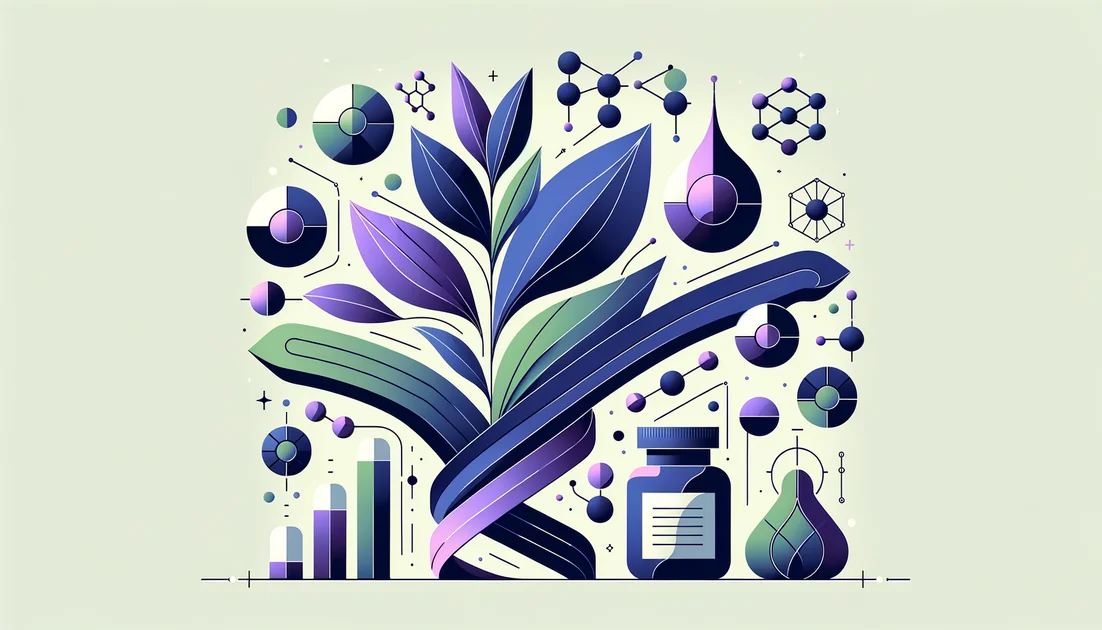Quick Summary
The Verdict
Dual Core- •This is a textbook absorption-enhancement duo: piperine's job is to get curcumin into circulation, and it works (≈20× in humans). Clinical trials using the combo are encouraging, but few isolate whether piperine adds outcome benefits beyond simply raising curcumin exposure
- •Rare liver-injury and drug-interaction risks warrant respect. [1][3][4][5][6][10][11][12]
Essential Core: Curcumin, Piperine
Beneficial Additions: Dietary fat with the dose
Optional Additions: Ginger or Boswellia for joint comfort, Switch to a high-bioavailability curcumin in place of piperine if on interacting meds
The Synergy Hypothesis
Piperine removes the main chokepoint for curcumin—first-pass breakdown—so more curcumin reaches tissues. Once there, curcumin's multi-switch anti-inflammatory and antioxidant actions do the heavy lifting; piperine may also add a small direct anti-inflammatory nudge. [1][2][7][13]
How the system works →
Think of curcumin as a talented player who rarely gets on the field because security keeps escorting him out. Piperine is the temporary VIP pass that lets him in. Together with a meal (fat helps), more curcumin circulates and can dial down the body's alarm system (NF-κB/COX-2) while flipping on built-in antioxidant shields (Nrf2). The clinical bottom line so far: many trials used the combo and saw benefits for joints and fatty-liver measures—but they mostly compared to placebo, so we still don't know if the combo beats a good modern curcumin formulation taken alone. [1][3][4][5][6][13][15][16]
Solo vs Combination
Curcumin alone works, but your body expels most of it quickly. Adding piperine is like giving it a fast-pass through the gut–liver checkpoint: blood levels shoot up and smaller doses can achieve similar exposure. That said, modern curcumin designs (phytosome/nanoparticle) can compete with or exceed piperine-boosted absorption without the same drug-interaction baggage—so the 'best' choice depends on your meds, budget, and tolerance. [1][16][18]
The Ingredients
Curcumin +
primary active• essential
Curcumin calms the body's inflammation alarms (like turning down the volume on NF-κB and COX-2) and flips on antioxidant defenses (Nrf2), which can ease joint soreness and improve inflammatory and metabolic markers. [13][14]
Works Alone?
Yes
Needs combination
What if I skip this? (high impact, combo breaks)
- •You keep the pepper but lose the main anti-inflammatory driver
- •Benefits largely disappear.
Piperine +
absorption booster• essential
Piperine slows the gut/liver 'first-pass' breakdown and drug-pumps that eject curcumin, so more slips into your bloodstream and sticks around longer. [1][2]
Works Alone?
Yes
Needs combination
What if I skip this? (high impact, combo survives)
How They Work Together
Curcumin + Piperine
enhances absorption
Right after you swallow curcumin, gut pumps and liver enzymes try to kick it out or break it down. Piperine temporarily slows these gatekeepers (like pausing the security scanners), so curcumin can slip through and circulate.
Piperine ⟂→ First-pass breakdown ↓ → Curcumin in blood ↑
Hiding the VIP (curcumin) from the security cameras (enzymes/pumps).
Curcumin + Piperine
dual pathway
- •Both calm inflammation, but through different switches
- •Together they may quiet pain signals better.
Curcumin turns down the cell alarm (NF-κB/COX-2) and turns on antioxidant defenses (Nrf2). Piperine has milder anti-inflammatory/analgesic effects and may add to the effect, especially once more curcumin is absorbed.
Curcumin → Inflammation ↓; Piperine → Pain signaling ↓; Both → Comfort ↑
Two people turning down different dimmer switches in the same noisy room. [7][13][14]
Piperine
competitive
By inhibiting CYP3A4 and P-gp (your body's drug-processing tools), piperine can boost not just curcumin but prescription drugs too.
Piperine ⟂→ Drug breakdown pumps/enzymes
Slowing the checkout line for every item, not just curcumin. [2][12]
How the system works in detail →
Think of curcumin as a talented player who rarely gets on the field because security keeps escorting him out. Piperine is the temporary VIP pass that lets him in. Together with a meal (fat helps), more curcumin circulates and can dial down the body's alarm system (NF-κB/COX-2) while flipping on built-in antioxidant shields (Nrf2). The clinical bottom line so far: many trials used the combo and saw benefits for joints and fatty-liver measures—but they mostly compared to placebo, so we still don't know if the combo beats a good modern curcumin formulation taken alone. [1][3][4][5][6][13][15][16]
How to Take This Combination
Timing Protocol
Doses
Curcumin: 500–1500 mg/day curcuminoids with piperine 5–15 mg/day (common clinical pattern ≈100:1 ratio). [3][4][5]
Piperine: 5–15 mg/day with curcumin (classic human PK used 20 mg with 2000 mg curcumin). [1][3][4][5]
⚠️ Order matters
- 1.
Take curcumin
- 2.
Piperine slows gut/liver 'first-pass' breakdown
- 3.
More curcumin reaches blood and tissues
- 4.
Inflammation signals down; antioxidant defense turns up
Ratio Requirements
Flexibility: recommended
Can add:Ginger, Boswellia, Omega-3s, Modern high-bioavailability curcumin (as an alternative to piperine—do not combine multiple enhancers without guidance)
Should avoid:High-dose piperine if you take CYP3A4/P-gp substrate drugs (statins, some calcium-channel blockers, immunosuppressants, certain sedatives, etc.). [2][12]
The Evidence
5 combination studies — studied together 1 pharmacokinetic, 4 clinical, 1 mechanistic
View key study →
Human pharmacokinetic crossover: 2 g curcumin + 20 mg piperine increased curcumin bioavailability ~2000% vs. curcumin alone without adverse effects. [1]
Read full technical summary →
Piperine (from black pepper) blocks the gut–liver "bouncers" that normally kick curcumin out, giving a documented ~20× jump in blood levels in humans. That's true, hard pharmacokinetics. Clinical trials often used the combo and report benefits for knee osteoarthritis symptoms and fatty-liver-related markers—but most did not compare against curcumin-alone, so we can't say the combo beats a modern high-bioavailability curcumin on outcomes yet. Safety is generally good short-term, but bioavailability-enhanced curcumin (including with piperine) has been linked to rare liver injury and piperine can raise levels of many medications—so dose and context matter. [1][3][4][5][6][9][10][11][12]
Cost
Estimated Monthly Cost
$13–$31/month (typical: curcumin 500–1500 mg/day + piperine 5–15 mg/day).
View breakdown →
Curcumin: $10–$25 (95% curcuminoids at 500–1500 mg/day); $25–$50 for premium high-bioavailability versions.
Piperine: $3–$6
- •Excellent value if you tolerate pepper and don't take interacting drugs
- •Otherwise, pay more for a piperine-free high-bioavailability curcumin.
Alternative Approaches
Curcumin Phytosome (Meriva) only
Curcumin (phytosome formulation), No piperine
+Higher, steadier absorption without pepper-related drug-interaction concerns; good OA data.
−Usually pricier than curcumin+piperine.
Choose if:You take CYP3A4/P-gp-metabolized meds or want to avoid piperine but still want better absorption.
Theracurmin (nanoparticle curcumin) only
Curcumin (nanoparticle/colloidal), No piperine
+Large human PK increases; avoids pepper interactions.
−Premium pricing; availability varies.
Choose if:History of polypharmacy or sensitive to black pepper extracts.
Kitchen combo
Turmeric spice, Black pepper, Cooking fat (olive oil, ghee)
+Cheapest, easy to sustain, and pairs with meals.
−Unknown curcumin content; potential spice contaminants; hard to hit clinical doses.
Choose if:You prefer food-first approaches and don't need clinical-trial-level dosing.
Safety Considerations
Short-term use at studied doses is generally well tolerated, but two issues deserve attention: (1) rare idiosyncratic liver injury has been reported—more often with 'enhanced' curcumin products; stop if you develop jaundice, dark urine, abdominal pain, or unusual fatigue; (2) piperine inhibits CYP3A4 and P-gp, potentially raising levels of many medications (e.g., some statins, calcium-channel blockers, sedatives, immunosuppressants). Start low, take with food, and review meds with a clinician before use. [2][9][10][11][12]
⚠️ Contraindications
- ✗People on narrow-therapeutic-index CYP3A4 or P-gp substrate drugs unless cleared by a clinician. [2][12]
- ✗Those with current or prior liver disease or unexplained abnormal liver tests. [10][11]
- ✗Pregnant or nursing individuals (insufficient safety data for enhanced extracts).
- ✗People with gallstones/bile duct obstruction or active GERD (curcumin can stimulate bile and may irritate reflux).
- ✗Anyone scheduled for surgery within 2 weeks (general bleeding-risk caution for botanicals).
Common Misconceptions
- ✗"More piperine is always better." Reality: enough to boost absorption is good; higher doses raise drug-interaction risk. [12]
- ✗"Turmeric in food equals supplement strength." Culinary turmeric has tiny curcumin amounts; supplements are concentrated.
- ✗"If it's natural, it can't hurt the liver." Rare liver injury has been documented, especially with enhanced products. [10][11]
- ✗"All curcumin products are the same." Formulation massively affects absorption; piperine is only one of several strategies. [18]
Common Questions
Do I need piperine for curcumin to work?
What dose and ratio are typical?
When should I take it?
Is it safe with my medications?
Interaction Network Details →
Curcumin:The turmeric extract that calms inflammation and boosts antioxidant defenses.
Piperine:Black pepper's active that helps your body absorb curcumin.
First-pass breakdown:The early breakdown and pumping-out that limits what gets into your blood.
Curcumin in blood:How much curcumin actually makes it into circulation.
Inflammation turned down:Your body's alarm system is quieter (less pain/swelling).
Joint comfort/function:Moving feels easier and less sore.
Liver & metabolic markers:Blood tests and scans that reflect liver fat and inflammation.
Visual network diagram coming in future update
You might also like
Explore more of our evidence-led investigations, comparisons, and guides across every article style.

Designs for Health (DFH)
Practitioner-grade manufacturing power with a transparency blind spot: the real story of Designs for Health supplements

Whey protein (concentrate/isolate/hydrolysate) vs Plant protein (pea/soy/rice blends)
Pick whey if you want the most leucine and lean-mass support per scoop and you tolerate dairy; pick plant protein if you're vegan/dairy-sensitive—just use a blend or slightly larger dose to match leucine.

Best for Fatty Liver (NAFLD/MASLD and NASH)
Omega-3s (EPA/DHA)

Raspberry (Rubus idaeus)
You bite into a bowl of tart-sweet raspberries and expect a sugar surge. Yet in labs from Chicago to Reading, this red fruit—and even its humble leaf—keeps showing up as a quiet stabilizer, not a saboteur, of metabolic and vascular rhythms. How did a berry from Mount Ida become a modern tool for calmer blood sugar and more supple arteries?

Sleep & Recovery: The Athletic Triangle
Magnesium + B6 shows small, condition-specific synergy; adding zinc hasn't proven extra benefits and can compete with magnesium at high doses.

Tocotrienols
The stealthier cousins of vitamin E—built with springy tails that move differently in cell membranes and behave differently in your body.

